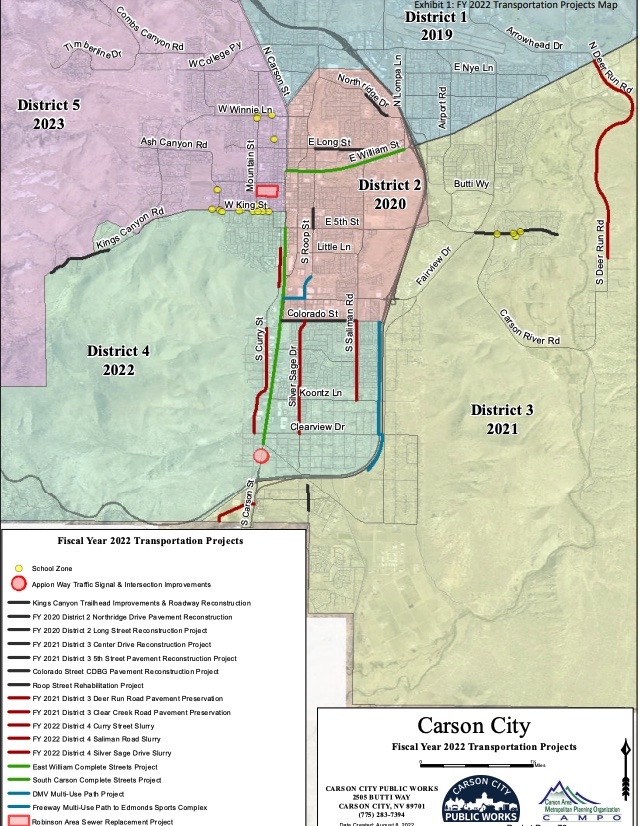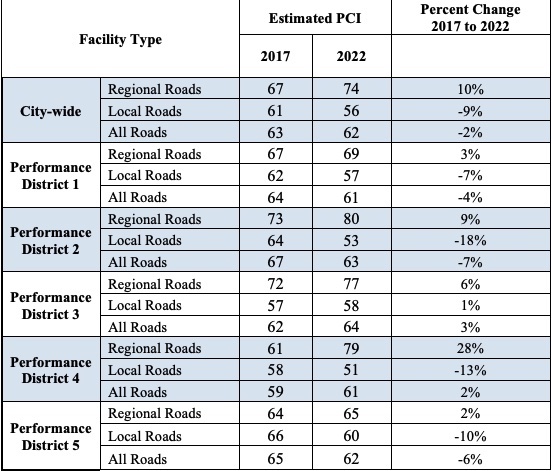 A map of road districts and transportation projects for the last fiscal year.
A map of road districts and transportation projects for the last fiscal year.
In contrast, pavement condition of regional roads has improved by 10 percent, from 67 to 74.
“Regional road PCI has improved as a result of the RTC’s efforts and one-time federal transportation grant projects,” the report states.
The report also shows that in the last five fiscal years, $8.7 million in matching funds from local funding has been used to secure nearly $42 million in federal and state grants. But there’s a downside to federal money.
“Federal funding and grants are only eligible to be spent on regional roads (arterials and collectors),” Transportation Director Chris Martinovich said in an email. “Local/neighborhood roads are not eligible for federal money.”
According to the city, arterial roadways serve geographic areas that are “smaller than their higher classified roadways” and connect to larger roads. Collectors gather traffic from local roads and “funnel” to the larger network. Local roads, in contrast, are not intended for long-distance travel but still make up the largest percentage of city roadways.
 A table of Pavement Condition Index values of Carson City roads, both regional and local.
A table of Pavement Condition Index values of Carson City roads, both regional and local.
“We are currently focusing on four mechanisms, two related to sales tax and two related to some form of special assessment or neighborhood improvement district, but these are subject to change,” he said. “Those options, along with additional detail about the current pavement condition, will be provided during a future RTC meeting in either October or November. We are also working on a project website to roll out in the next couple weeks that details more of this information.”
The RTC meets the second Wednesday of every month after the Carson Area Metropolitan Planning Organization meeting in the Carson City Community Center.